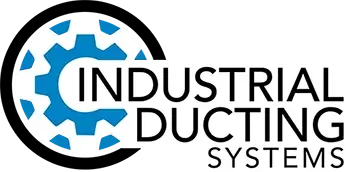Sheet Metal Fabrication Ducting Solutions
Sheet metal fabrication facilities encompass a wide range of operations from architectural metalwork to precision aerospace components. These facilities typically combine cutting, forming, welding, and finishing operations that generate multiple types of airborne contaminants including metallic particles, welding fumes, grinding dust, and coating emissions.
Modern sheet metal fabrication increasingly involves laser cutting, plasma cutting, and waterjet cutting technologies that create unique ventilation challenges. Laser cutting generates extremely fine particles and potential toxic gases, while plasma cutting produces significant quantities of metallic fumes. Traditional mechanical cutting and forming operations generate larger particles but in substantial quantities.
The industry faces increasing demands for precision and quality while managing complex alloy compositions that may include hazardous elements like chromium, nickel, and manganese. Many facilities process multiple material types simultaneously, creating complex ventilation requirements that must address different emission characteristics and regulatory requirements.
Specific Air Quality Requirements & Regulations
Sheet metal fabricators must comply with OSHA standards for metallic exposures, including iron oxide (10 mg/m³), chromium compounds (varies by form), and nickel compounds (1 mg/m³). Welding operations are subject to 29 CFR 1910.252, which requires local exhaust ventilation for enclosed spaces and specific materials.
Facilities performing stainless steel welding must address hexavalent chromium exposure under OSHA's chromium standard (29 CFR 1910.1026), which establishes an 8-hour TWA of 5 micrograms per cubic meter. This requires sophisticated exposure monitoring and engineering controls.
EPA regulations under NESHAP may apply to facilities using certain coating processes or handling large quantities of hazardous air pollutants. Many facilities operate under synthetic minor permits that limit potential emissions to avoid major source requirements.
Temperature considerations vary significantly across sheet metal operations. Cutting processes may generate localized temperatures exceeding 1000°F, while welding operations can reach 3000°F+ at the arc. Powder coating operations typically require 350-400°F curing temperatures.
Construction Process & System Design Considerations
Sheet metal fabrication facilities require flexible ventilation systems that can accommodate diverse operations and varying production requirements. Construction must address the complex layout of fabrication equipment, including large cutting tables, press brakes, and welding stations.
The construction process must carefully coordinate with production schedules that often involve custom projects with tight deadlines. Phased installation approaches are common to maintain production capability while upgrading ventilation systems.
Ductwork design must accommodate the mobility requirements of welding operations while providing effective capture for fixed stations. Flexible connections and moveable capture arms are essential for welding fume control. Cutting operations require down-draft tables or enclosed systems to control emissions at the source.
Spark and hot particle control is critical throughout the system. Spark arrestors, settling chambers, and fire suppression systems may be required. Ductwork must be designed to prevent accumulation of combustible metallic dusts.
Technical Specifications & Performance Requirements
Sheet metal fabrication ventilation systems typically require 25,000 to 500,000 CFM depending on facility size and operations. Individual workstation requirements range from 1,000 CFM for small welding stations to 10,000+ CFM for large cutting tables.
Ductwork materials must withstand high-temperature particles and potential spark exposure. Galvanized steel with spark-resistant coatings is common, while stainless steel may be required for highly corrosive applications. Refractory linings may be necessary near high-temperature sources.
Transport velocities must be adequate to carry metallic particles without settling. Typical design velocities range from 3,500-4,000 FPM for main lines and 4,000-4,500 FPM for branch connections carrying metallic dust.
Static pressure requirements typically range from 10-20 inches of water column, depending on filtration requirements and system complexity. High-efficiency filtration may be required for fine particles generated by laser cutting and grinding operations.
How Industrial Ducting Systems Delivers Solutions
Industrial Ducting Systems has extensive experience with the diverse requirements of sheet metal fabrication, from traditional mechanical operations to advanced laser cutting systems. Our comprehensive approach addresses both particulate control and fume extraction while maintaining operational flexibility.
Our 2D CAD design services provide detailed system layouts that accommodate the complex equipment arrangements and workflow patterns typical in sheet metal fabrication. We understand the importance of maintaining flexibility while providing effective capture at all workstations.
Our expertise in high-temperature applications ensures that systems can handle the thermal challenges of cutting and welding operations. We provide specialized components including spark arrestors, heat exchangers, and refractory-lined ductwork as required.
Our logistics coordination addresses the project-driven nature of sheet metal fabrication, understanding that production schedules often involve tight deadlines and custom work. We provide installation approaches that maintain production capability while ensuring effective emission control performance.
Experience the Industrial Ducting Systems Advantage
Spark-resistant systems, flexible capture design, precision welding expertise—discover why sheet metal fabricators trust us with their most demanding fume extraction and particle control challenges. Let's design a system that exceeds your expectations.
